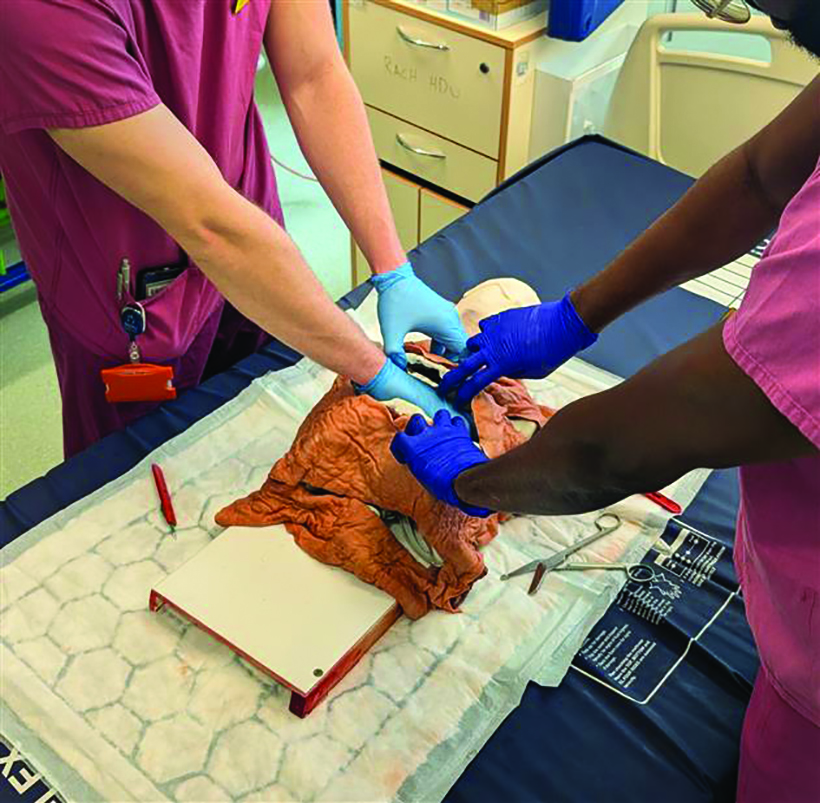
Emergency department thoracotomy (EDT) in children is a rare, high-stakes procedure performed primarily during traumatic cardiac arrest [1]. Training opportunities are limited, and current reliance on porcine models raises ethical concerns and lacks paediatric anatomical fidelity. This project aimed to develop and evaluate a low-cost, Aqueous Dietary fibre Antifreeze Mix gel (ADAMgel) based, synthetic model tailored to paediatric EDT, improving training accessibility, anatomical realism, and trainee confidence [2].
A novel thoracotomy model replicating the thoracic cavity of a 9-year-old child was constructed using synthetic materials, including ADAMgel-laminated soft tissues and a skeletal framework, Figure 1. The model underwent iterative development informed by expert focus groups. Final evaluation included two simulation sessions with doctors (n=11), who completed pre- and post-simulation Likert scale questionnaires assessing confidence and understanding. Data were collected between January and March 2025. Results were analysed using Wilcoxon signed-rank tests. Qualitative feedback was gathered from participants and faculty at the Royal College of Surgeons (RCS) Pre-hospital emergency resuscitative thoracotomy course.
All procedures were conducted with appropriate institutional approval for educational simulation-based research.
Statistically significant improvements were observed across several domains: confidence in performing EDT increased from median 1 to 4 (p=0.027), understanding of the procedure (p=0.016) and anatomy (p=0.019) also improved. All participants unanimously agreed the model improved their confidence and was a useful training aid. Surface tissues were rated realistic by 91%, and bony structures by 82%. Feedback from RCS faculty highlighted the model’s advantages over porcine equivalents, including reusability, independent practice opportunities, and superior anatomical accuracy. Suggested improvements included stronger tissue fixation and simulated aortic control.
This ADAMgel-based model demonstrates a feasible, ethical, and effective alternative to animal models in paediatric EDT simulation. Improvements in learner confidence and anatomical understanding support its utility in early procedural training. Planned enhancements, including aortic occlusion simulation, will increase fidelity. Broader validation across experience levels will determine its future role in standardised trauma education.
As the submitting author, I can confirm that all relevant ethical standards of research and dissemination have been met. Additionally, I can confirm that the necessary ethical approval has been obtained, where applicable.
1. Moskowitz EE, Burlew CC, Kulungowski AM, Bensard DD. Survival after emergency department thoracotomy in paediatric trauma. Pediatr Surg Int. 2018;34(8):857–860.
2. Clifford E, Stourton F, Willers J, Colucci G. Development of a Low-Cost, High-Fidelity, Reusable Model to Simulate Clamshell Thoracotomy. Surg Innov. 2023;30(6):739–744.

